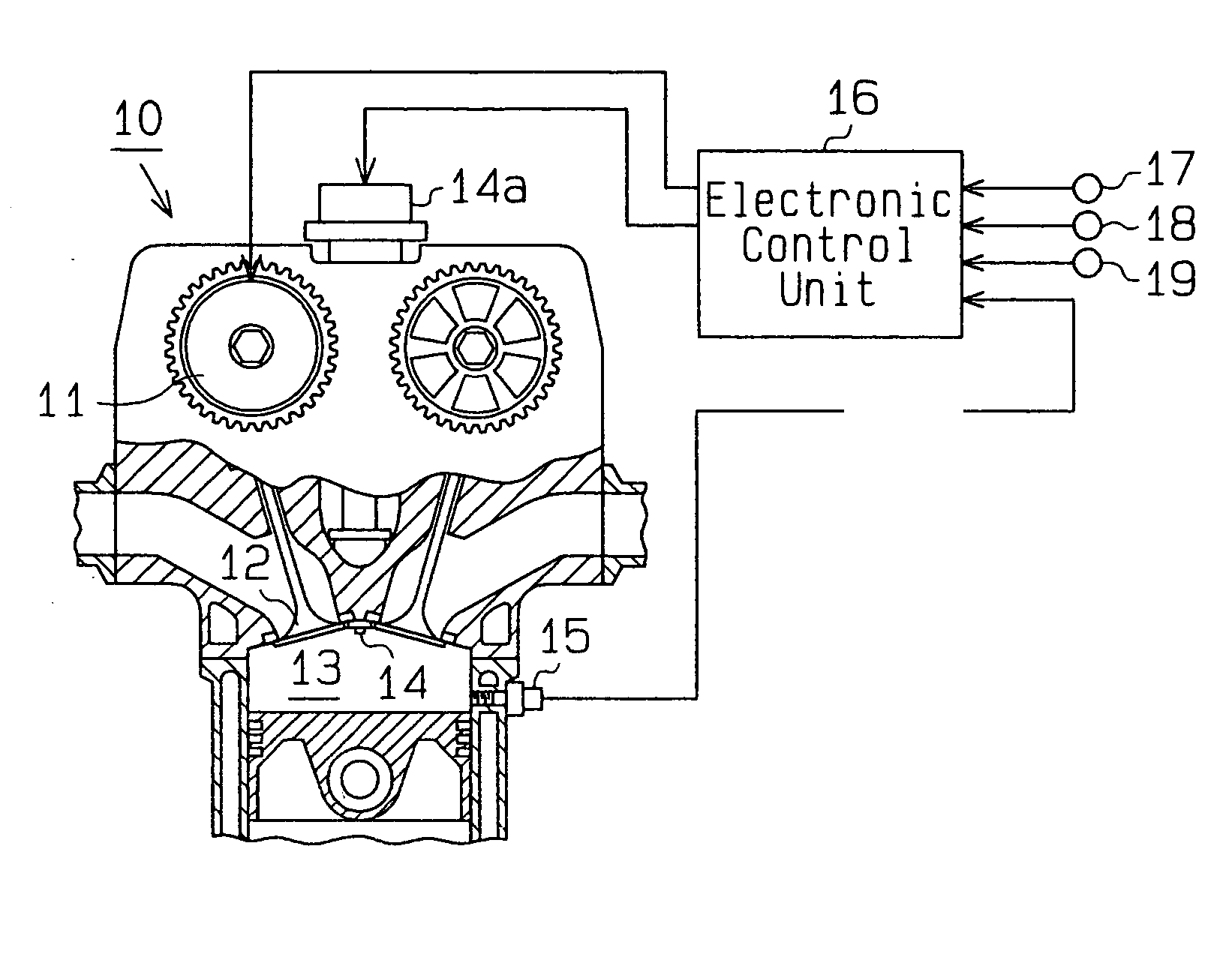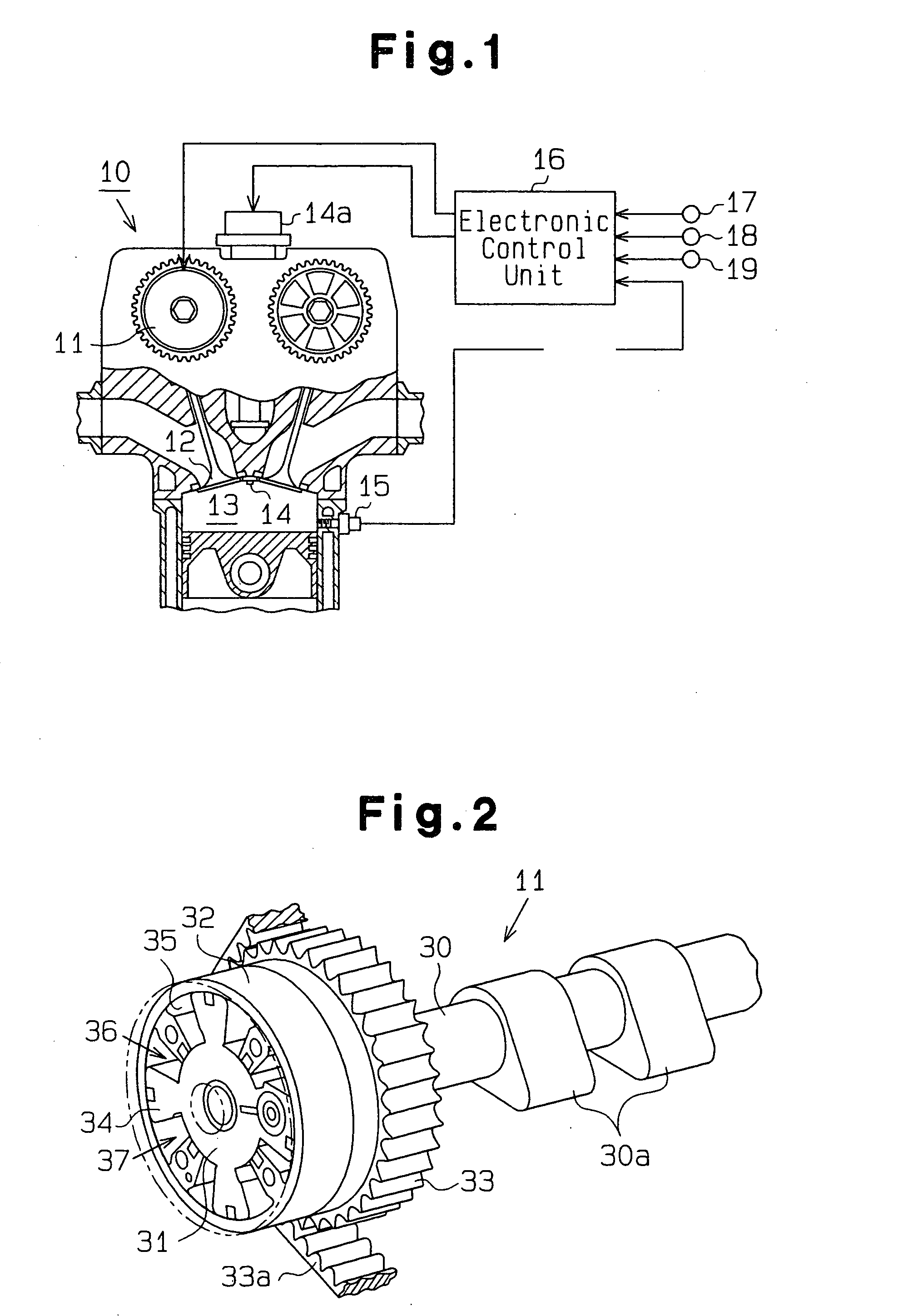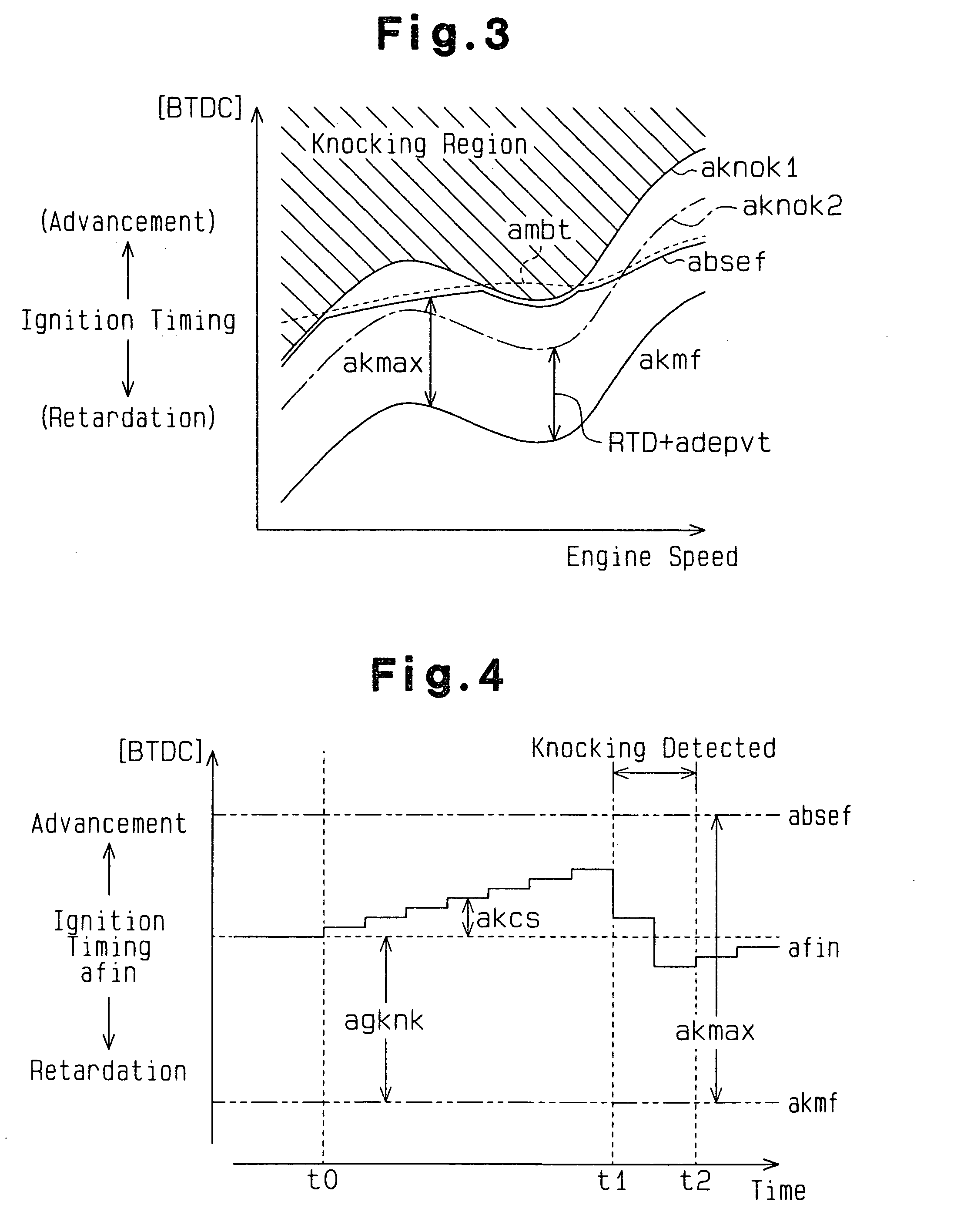Control apparatus for internal combustion engine
a control apparatus and internal combustion engine technology, applied in the direction of electric control, machines/engines, output power, etc., can solve the problems of increasing the possibility of knocking, reducing the substantial volume of the combustion chamber, and increasing the compression pressure of the in-cylinder, so as to achieve the effect of solving problems
- Summary
- Abstract
- Description
- Claims
- Application Information
AI Technical Summary
Benefits of technology
Problems solved by technology
Method used
Image
Examples
first embodiment
(First Embodiment)
A control apparatus for an internal combustion engine according to a first embodiment of the present invention will be described below with reference to the drawings.
As shown in FIG. 1, an internal combustion engine 10 to which the present embodiment is applied comprises a variable valve timing mechanism 11 that can vary a valve timing for an intake valve 12, as an adjustable mechanism that can vary a valve actuation (dynamic behavior) of engine valves. A combustion chamber 13 of the internal combustion engine 10 is provided with an ignition plug 14 that ignites and burns a mixture of air and fuel sucked into the combustion chamber 13, and a knock sensor 15 that detects the occurrence of knocking accompanying the burning of the mixture.
An electronic control unit 16 performs various types of control relating to the operation of the internal combustion engine 10. The electronic control unit 16 is a computer, which comprises a CPU that performs the various types ...
second embodiment
(Second Embodiment)
A control apparatus for an internal combustion engine according to a second embodiment of the present invention will now be described below with reference to FIGS. 10 to 15. The differences from the first embodiment will be mainly discussed.
In the first embodiment, the variable valve actuation control and the ignition timing control are coordinated by changing the valve actuation set value (actual VVT advancement amount vt) for the variable valve actuation control in accordance of the magnitude of a change in ignition timing made by the knock control to deal with deposits, while readjusting the knock limit point or the like in accordance with the change in valve actuation set value. Furthermore, in the first embodiment, the above readjustment is carried out considering that the effect of a change in valve actuation set value on the knock limit point is mainly produced by a change in burning state corresponding to a change in internal EGR amount accompanying the...
third embodiment
(Third Embodiment)
A control apparatus for an internal combustion engine according to a third embodiment of the present invention will now be described below with reference to FIGS. 16 to 18. The differences from the previous embodiments will be mainly discussed.
The first embodiment uses, as learning values for the knock control of the ignition timing, two learning values including the rate learning value rgknk, reflecting a change in ignition timing made to deal with deposits, and the KCS learning value agknk, which reflects a change in ignition timing made to deal with a factor other than of deposits. Description will be given below of the manner of updating these learning values according to the present embodiment.
In the present embodiment, if the KCS feedback correction value akcs deviates markedly from 0 (akcs<-1A or akcs>A), both learning values are updated. Then, a learning update amount tdl is determined on the basis of the magnitude of the deviation. The learning u...
PUM
 Login to View More
Login to View More Abstract
Description
Claims
Application Information
 Login to View More
Login to View More - R&D
- Intellectual Property
- Life Sciences
- Materials
- Tech Scout
- Unparalleled Data Quality
- Higher Quality Content
- 60% Fewer Hallucinations
Browse by: Latest US Patents, China's latest patents, Technical Efficacy Thesaurus, Application Domain, Technology Topic, Popular Technical Reports.
© 2025 PatSnap. All rights reserved.Legal|Privacy policy|Modern Slavery Act Transparency Statement|Sitemap|About US| Contact US: help@patsnap.com



